As winter melts into spring, waterfowl hunters and their loyal duck dogs are getting out into the sunshine and stretching their legs.
Advertisement
These dogs worked hard all fall, and they deserved their peace and quiet once the birds had all flown south and the cold months descended. But now that spring has come again, there’s work to be done to get ready for the next hunting season.
It’s an incredible thing, to see an experienced retriever at work. Whether it’s on the water or through the stubble in a barley field, they are eager to go to work and get the job done.
Advertisement
If you have been considering the idea of adding a hunting dog to your family, we have a few breeds that you should consider. And while these dogs are certainly bred to bring in a mallard or a Canada goose, they’re just as eager to retrieve your downed grouse or other upland bird, as well.
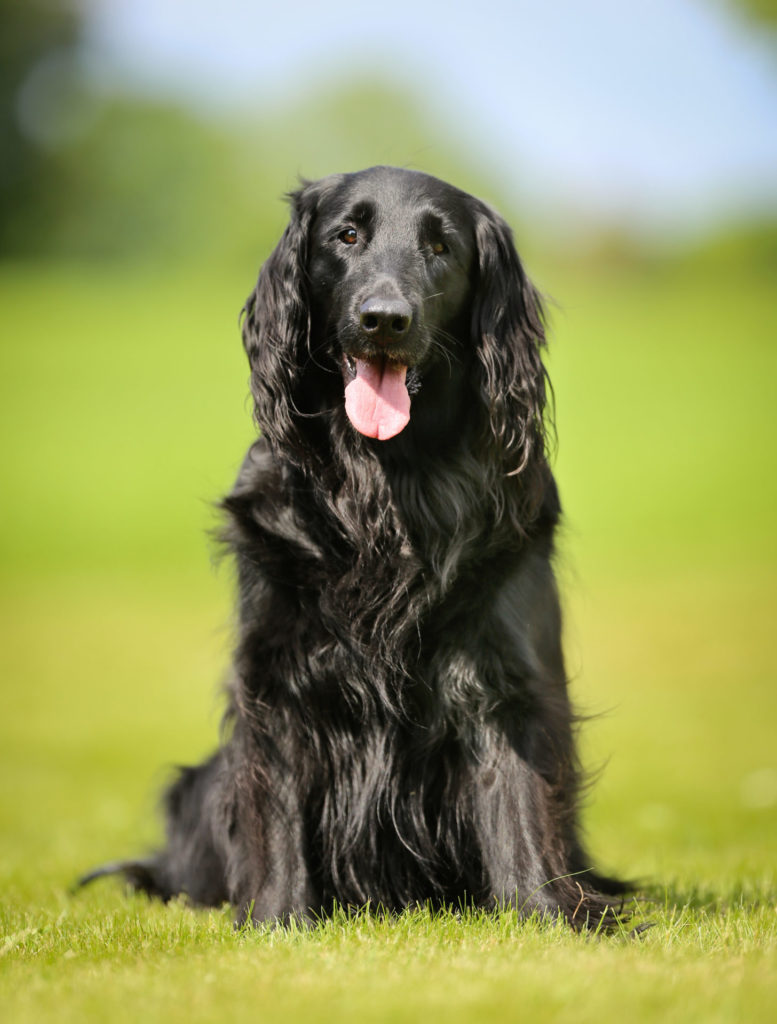
Flat-Coated Retriever
Originally bred in the 19th century to help fishermen bring in fish and other floating objects, the original version of this breed was an unrivalled swimmer and excellent retriever. As firearms advanced in technology and hunters soon began to realize their need for a retriever, these dogs were bred with setters and pointers to increase their bird sense. As such, the wavy-coated retriever was born. Over time, and nearing the end of the 1800s, breeders began to cross the wavy-coated retriever with a straighter-haired breed, and we have the flat-coated retriever we know today.
Advertisement
Although the breed was very popular in the late 1800s and early 1900s, by the end of the Second World War the breed’s numbers had dwindled into almost non-existence. There have been efforts to bring the breed back and there are a handful of breeders in BC.
The flat-coated retriever is sweet and playful, and sensitive and responsive to training. Their coats are either solid black or liver-coloured and they typically live to be eight or nine years old.
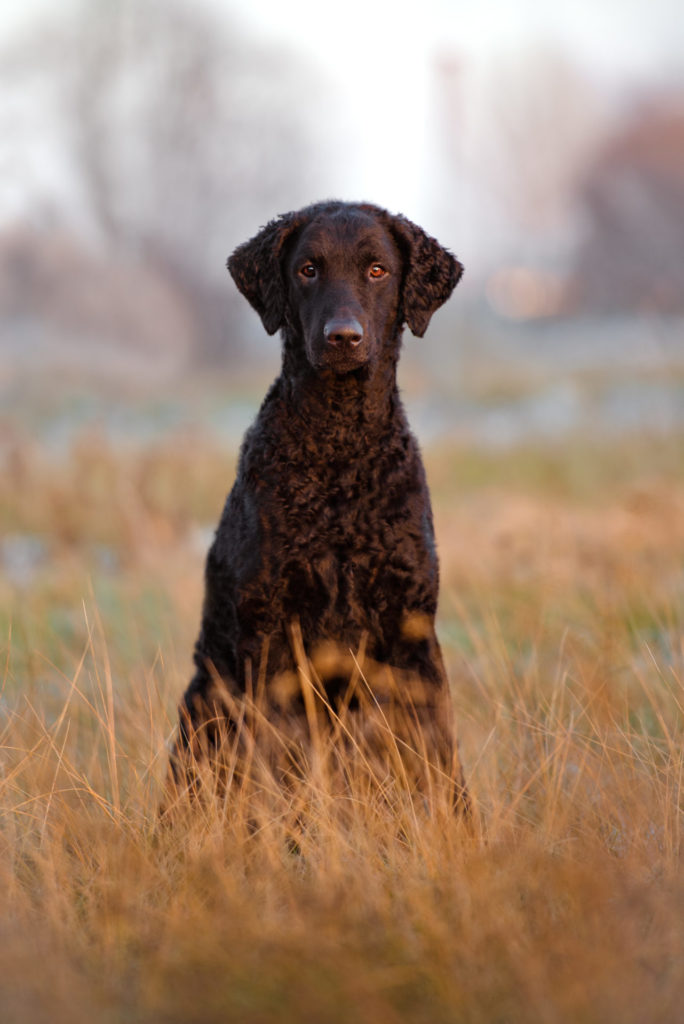
Curly-Coated Retriever
Around the mid-1800s, the curly-coated retriever was the most popular retriever in England, prized as a retriever and family pet. The breed was exported to Australia and New Zealand, where it remains popular, and the first exports to the US occurred in 1907. During the 1900s, the breed dwindled in popularity as a hunting dog, but today’s hunters find the curly-coated retriever to be soft-mouthed, gentle and responsive to commands. This breed is known to be reserved with strangers, and they’re touted as one of the most courageous retrievers.
Although it might look like a handful, the coat of a curly-coated retriever doesn’t require any extra care than usual. Brushing does loosen the tight curls, so it’s best done before swimming and not after. This breed has a black or liver-coloured coat and their typical lifespan is eight to 12 years.
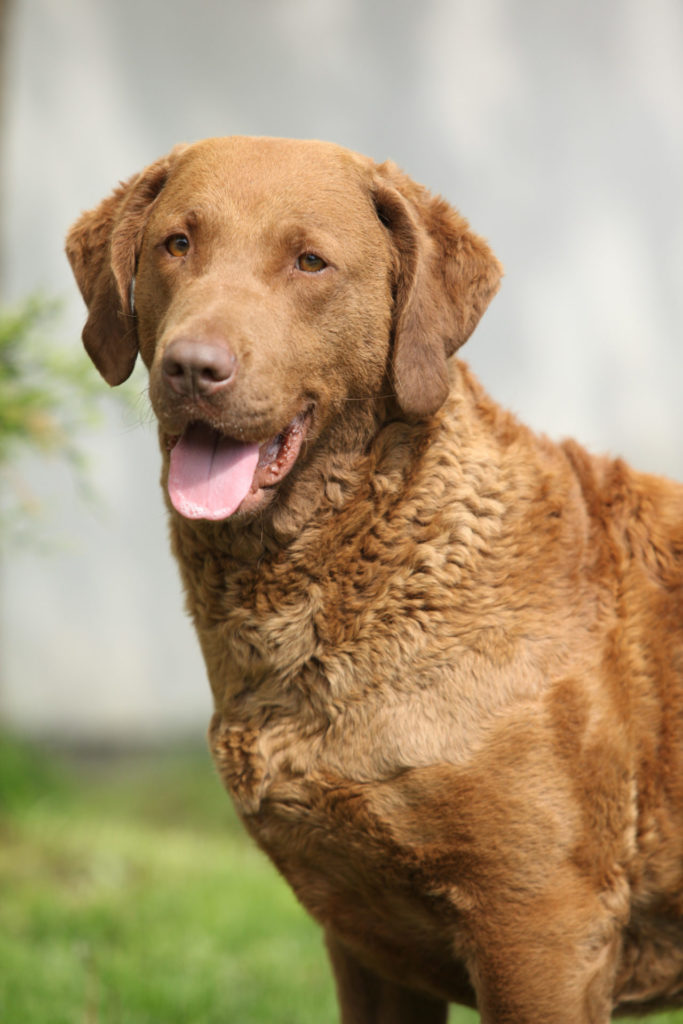
Chesapeake Bay Retriever
The Chesapeake Bay retriever has an unusual history, with what’s considered to be the two founding pups having been rescued from a shipwrecked English ship off the coast of Maryland in 1807. No one knew what breed these puppies might be, but they soon proved themselves to be able and skilled water retrievers – so much so that local waterfowl hunters brought their dogs to be bred with these two. Over time, and through a few generations of crossbreeding, a distinct local breed was developed, known for bravely swimming through icy waters to retrieve fallen ducks. The breed was recognized by the American Kennel Club in 1885.
These retrievers aren’t known for being as friendly as some other retriever varieties, and can be protective, stubborn, reserved with strangers and often aggressive with strange dogs. Their coat is oily and seldom needs washing, but they do need to be brushed weekly. Their coat is any colour of brown, and their lifespan tends to be between 10 and 13 years.
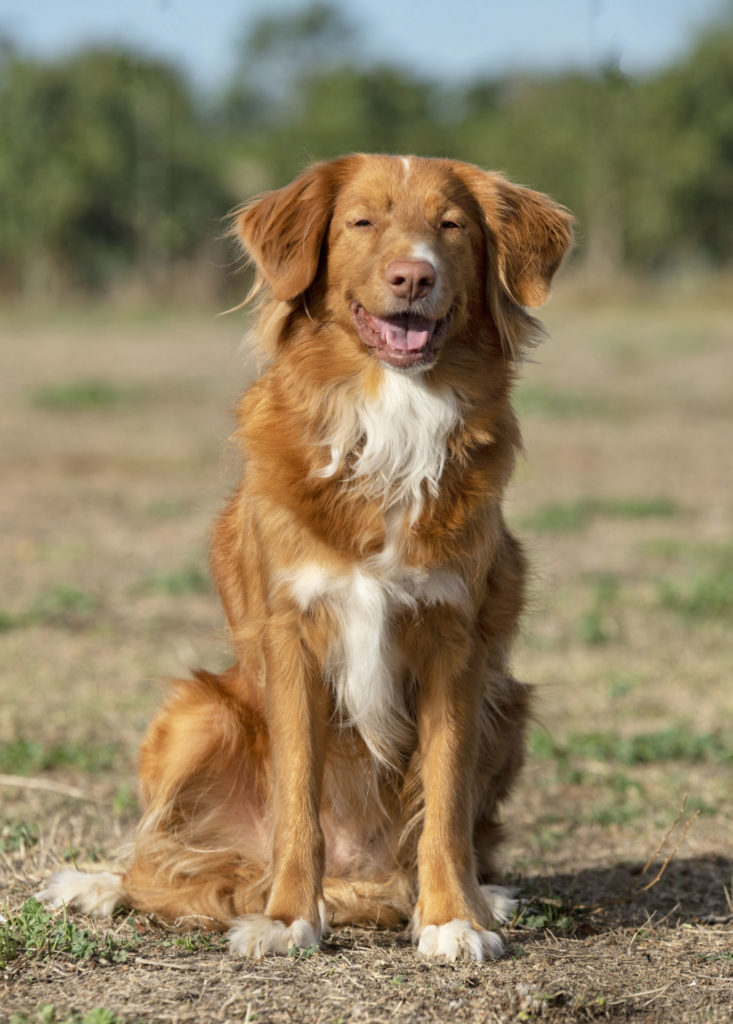
Nova Scotia Duck Tolling Retriever
A Canadian specialty, the Nova Scotia duck tolling retriever, also known as a toller, was developed in Little River Harbour, Yarmouth County, NS, in the early 19th century. The breed is known for tolling, as its name suggests, which is done by the dog running along the shoreline, chasing a stick or ball and sometimes disappearing from sight. With its reddish coat, a toller resembles a fox, a natural enemy for waterfowl, and especially geese. Some literature suggests waterfowl flying by will come down to investigate what they believe to be a fox out of curiosity, and other literature suggests these waterfowl come in on the defensive to attack, as foxes are known for raiding nests. Either way, one or two birds, or an entire flock, will come in to land – and that’s when the hunter’s job begins and the toller can retrieve any downed birds.
Tollers are known to be playful and energetic, friendly towards everyone and gentle. They learn fast and they want to please. While you won’t see a toller in every duck blind, there are a handful of breeders in BC. These dogs often live to be nine to 11 years old.
As a side note, my father is an avid duck hunter in the bays and fields around Lake Erie in southwestern Ontario. When I was a child, we had a beautiful toller male named Rusty (Harbourlights Rusty Dawn), who came from the famed Harbourlights Kennel in Nova Scotia, bred by Avery and Erna Nickerson. The Nickersons were known amongst toller enthusiasts as the keepers of the original toller bloodlines, and to own a Harbourlights toller is to own something quite near perfection.
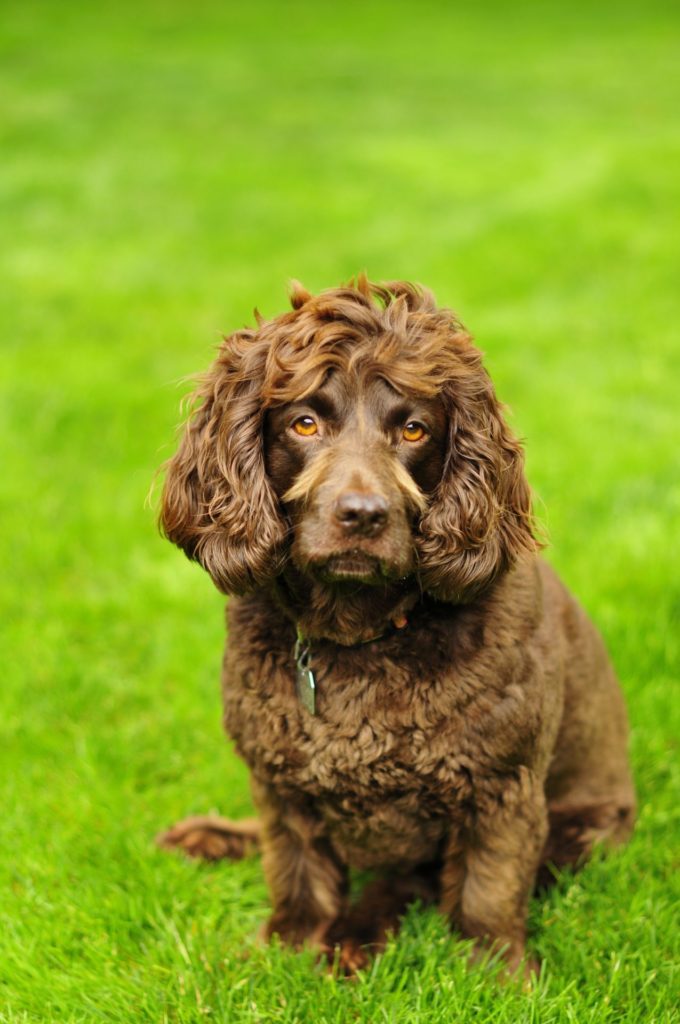
Boykin Spaniel
The Boykin spaniel was bred with a purpose in mind. In the early 1900s, L. W. Boykin wanted a small retriever that could fit in the small section boats used in South Carolina. After several crosses, some unknown and some crosses made to other spaniels or retrievers, the Boykin spaniel was named. This dog has the flushing abilities of a spaniel, the retrieving abilities of a retriever, and even some sense for tracking deer. It is the state dog of South Carolina and joined the American Kennel Club in 2010.
The Boykin spaniel is known for being friendly, eager to please and relatively easy to train, making it an excellent breed for a novice owner. They can get along well with other pets and they aren’t known for barking excessively.
These breeds have a flat or slightly wavy coat, in liver, brown or a dark chocolate colour. Males stand 18 inches or less in height and have a max weight of about 40 pounds. Boykins tend to live about 11 to 13 years.
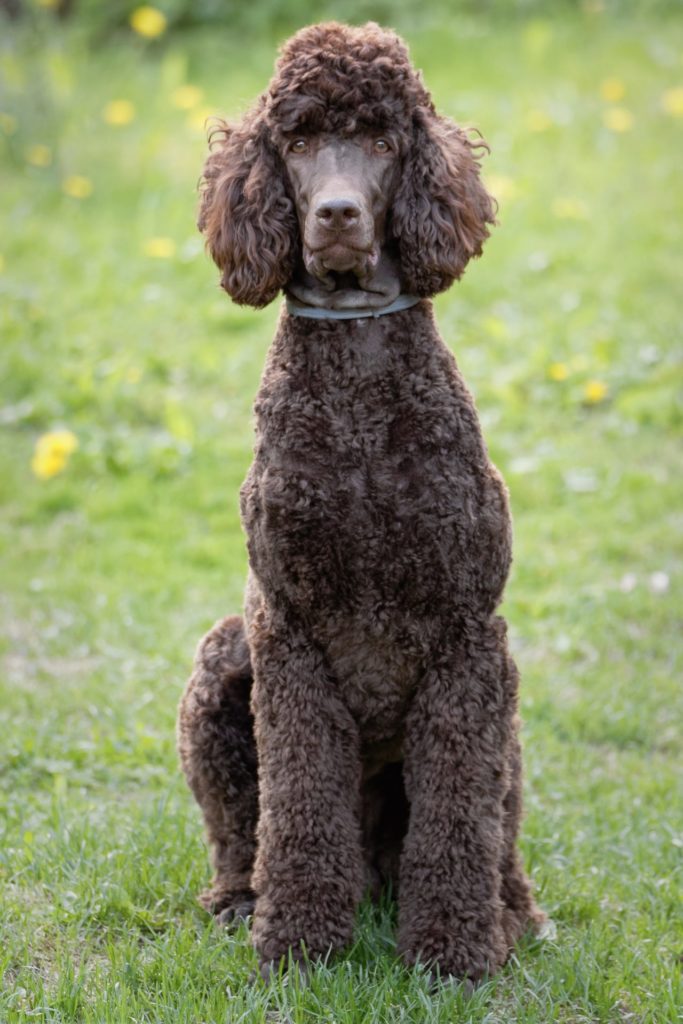
Standard Poodle
Yes, you read that correctly – the standard poodle was once known as a superior retriever, originating in Germany. The classic poodle clip you see in today’s dog shows once served a purpose for these water dogs: clipped close for ease in swimming, and kept longer around the chest, joints and tail tip for warmth and protection.
When poodles were exported to France, they became known more as companion and circus performers, rather than hunting dogs, and the effort began to breed smaller versions of this dog. Today, in addition to the standard poodle, there are also miniature and toy versions.
Poodles come in any colour, and are known as playful, adventurous and responsive. They are often devoted to one person and wary of strangers. Standard poodles live 12 to 15 years on average.
Out Of The Water
Hunting dogs come in a wide variety of shapes, sizes and talents. While the previously mentioned breeds work well for waterfowl hunters, some dogs have been bred specifically to root out and chase small varmints, and others have been bred to deal with quarry much larger.
Dachshund means “badger dog” in German, where these feisty dogs would follow their quarry into a burrow, pull it out and kill it. The Jack Russell terrier, a handful for even experienced dog owners, was bred for fox hunting in England and has a talent for chasing mice and rabbits. The whippet, growing to a maximum of 22 inches in height and 40 pounds, was originally bred for coursing rabbits and other small game. With the coming of the Industrial Revolution, the whippet breed moved from hunter to entertainer and its career as a racing dog began, following a waving rag around a track.
Some of the largest breeds of dogs have fearsome heritage, despite their reputation today as easy-going, gentle giants. The Irish wolfhound was bred to hunt – you guessed it! – wolves in Ireland, as well as elk. The breed became a favourite amongst Irish chieftains. The Scottish deerhound was bred for coursing deer and coveted by the Scottish nobility. The advent of breech-loading rifles in the 1800s was partially to blame for the breed’s decline, as coursing lagged in popularity. The Great Dane was nicknamed “The Apollo of Dogs” and the ancestors of today’s dogs were used in war and for hunting wild boar across Germany.
Resources
- Nova Scotia Duck Tolling Retriever Club Of Canada – toller.ca
- The Dog Breed Bible by D. Caroline Coile, Ph.D.
- Dogtime.com